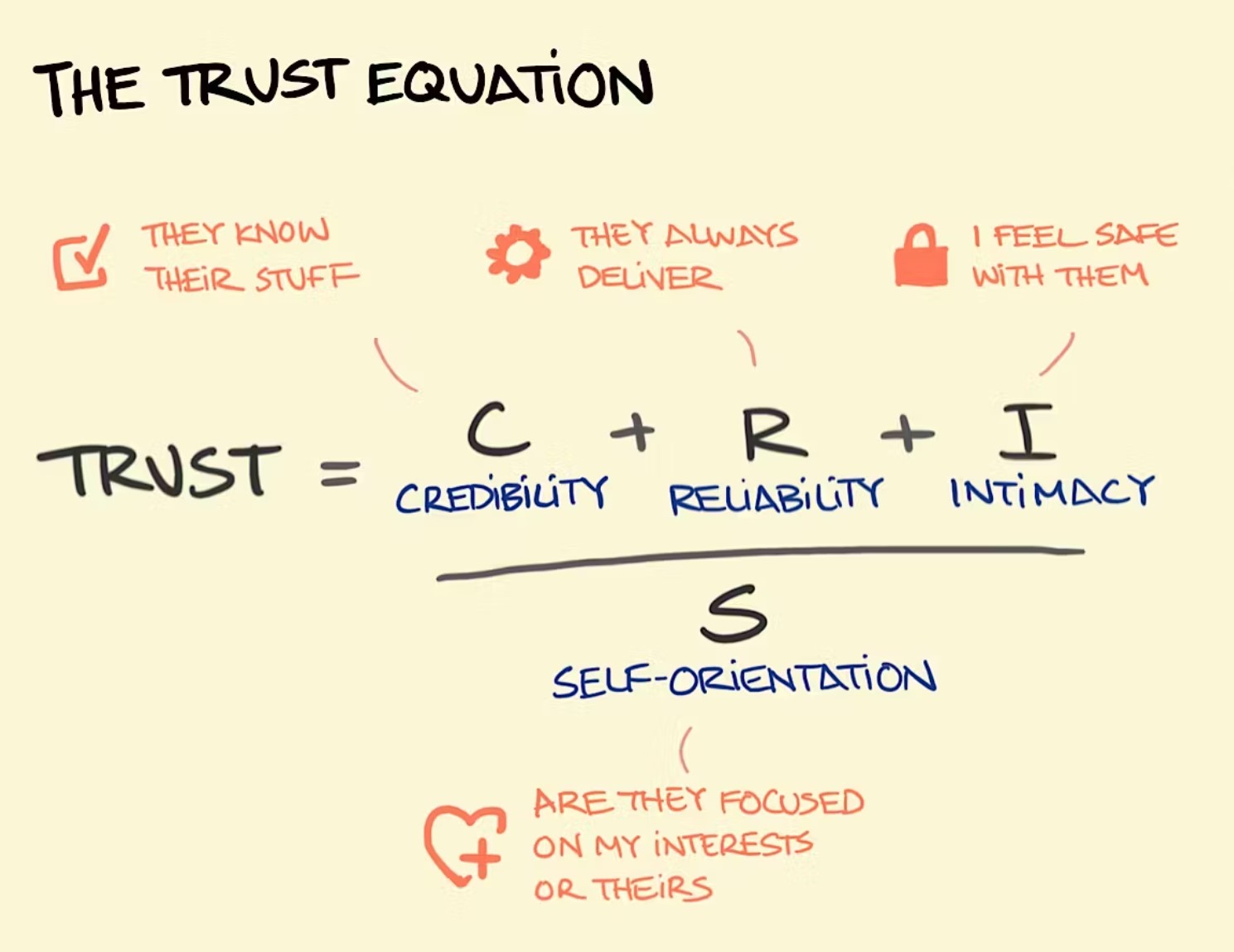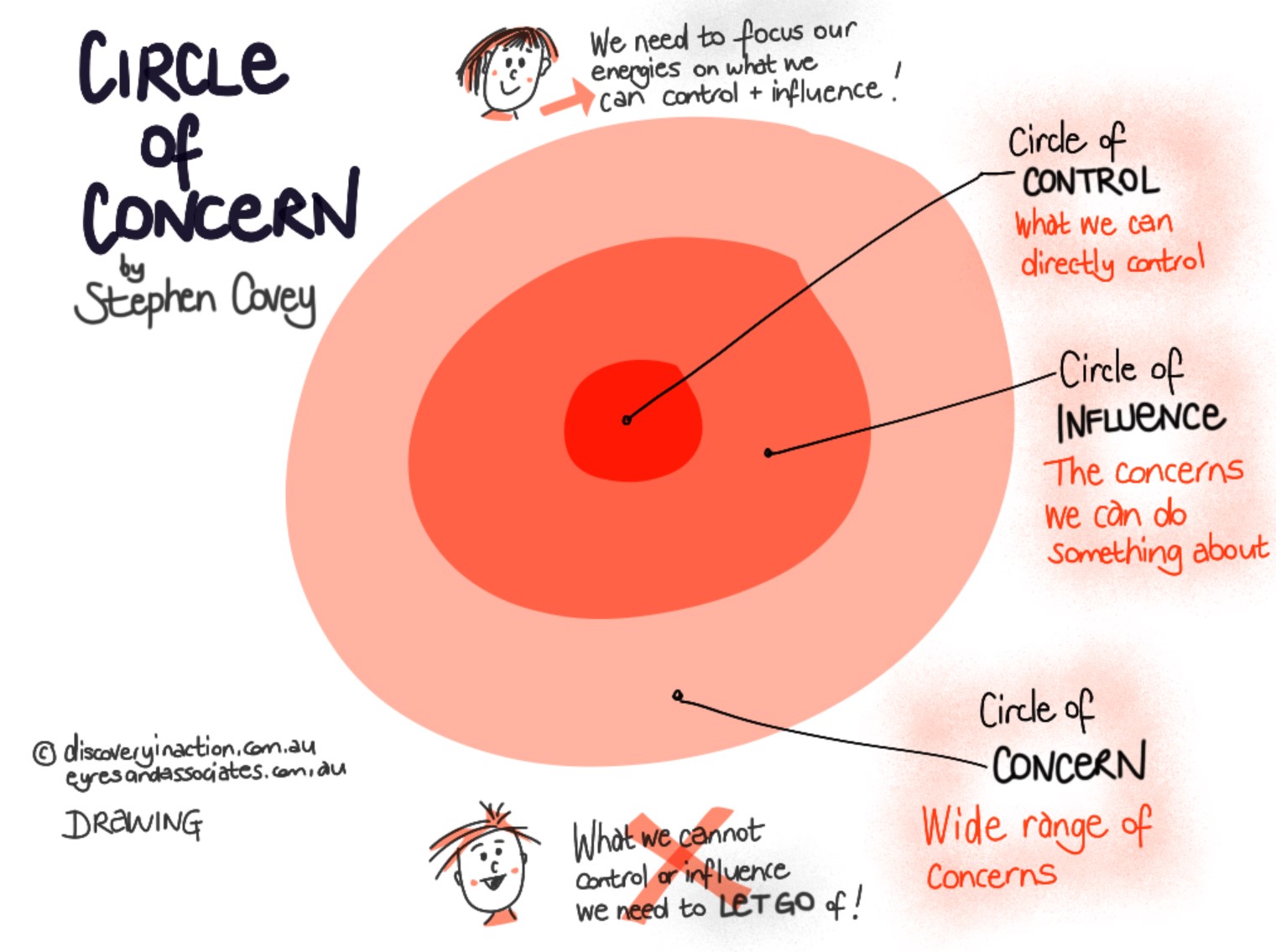Leadership models I: Iceberg Model, Six Thinking Hats, Trust Equation, Circle of influence, OODA Loop
Marton Trencseni - Fri 12 May 2023 - Leadership
Introduction
This year I'm attending a multi-day leadership course that spans 6 months. One of the things the coaches talk about is various mental models useful in leadership and self-management. These are some of the mental models mentioned in the course.
Iceberg Model
The organizational Iceberg Model is used to understand organizational culture and change management. It emphasizes the visible and tangible aspects of an organization (above the water) and the more subtle, intangible, and often unconscious elements (below the water) that contribute to an organization's overall culture and performance.
Above the water:
- Organizational Structure: The formal hierarchy, roles, and reporting relationships within an organization.
- Processes: The systems, procedures, and protocols that govern how work is carried out, including decision-making, communication, and problem-solving.
- Skills: The abilities, competencies, and expertise of individuals within the organization.
- Behaviors: The observable actions and interactions of individuals and teams, reflecting how people conduct themselves in the workplace.
- Vision: The long-term direction, goals, and aspirations of the organization.
- Strategy: The plan or approach to achieving the organization's vision, including the allocation of resources, priorities, and milestones.
- Stated Values: The explicit principles, beliefs, or ethical guidelines that the organization claims to prioritize and uphold.
Below the water:
- Feelings: The emotions, moods, and attitudes of individuals within the organization, which can influence behavior, decision-making, and overall performance.
- Norms: The informal, unwritten rules or expectations that govern behavior and interactions within the organization.
- Values: The deeply-held beliefs and priorities that influence decision-making, actions, and attitudes, often operating at an unconscious level.
- Unwritten Rules: The implicit guidelines, habits, or customs that influence behavior and decision-making within the organization, even though they may not be formally documented or acknowledged.
- Shared Assumptions: The commonly-held beliefs or premises that individuals within the organization take for granted, which can shape their perceptions, actions, and interpretations of events.
- Symbols: The visual, verbal, or physical representations that convey meaning, values, or identity within the organization, such as logos, jargon, or office layouts.
- Stories: The narratives, anecdotes, or legends that circulate within the organization, reflecting its history, culture, and values, and helping to shape its collective identity.

The organizational Iceberg Model highlights the importance of considering both the overt, visible aspects of an organization and the underlying, often hidden elements that influence its culture and effectiveness. By addressing both the "above water" and "below water" components, leaders can develop a more comprehensive understanding of their organization and implement more targeted and sustainable change initiatives.
Six Thinking Hats
The Six Thinking Hats is a parallel thinking process and decision-making tool developed by Dr. Edward de Bono. The model encourages individuals or teams to approach problems or discussions from six different perspectives by "wearing" different metaphorical hats. Each hat represents a specific mode of thinking, and the purpose is to facilitate more efficient, creative, and comprehensive problem-solving, decision-making, and communication. The six hats are:
- Blue Hat: Focused on managing the thinking process. When wearing the blue hat, participants oversee the overall discussion, ensuring that the group stays on track, follows the thinking process, and reaches a conclusion or decision.
- White Hat: Focused on data and information. When wearing the white hat, participants gather, analyze, and share facts, figures, and objective information related to the topic.
- Red Hat: Focused on emotions and intuition. When wearing the red hat, participants express their feelings, emotions, and gut reactions to the issue without the need for justification or rationalization.
- Green Hat: Focused on creativity and innovation. When wearing the green hat, participants generate new ideas, alternative solutions, and innovative approaches, encouraging lateral thinking and brainstorming.
- Yellow Hat: Focused on optimism and benefits. When wearing the yellow hat, participants explore the positive aspects, advantages, and opportunities associated with an idea or proposal, considering the best-case scenarios and potential value.
- Black Hat: Focused on critical thinking and potential problems. When wearing the black hat, participants assess potential risks, challenges, and obstacles, identifying why a proposed solution may not work or what could go wrong.

By using the Six Thinking Hats approach, individuals and teams can explore different aspects of a problem, reduce conflict and biases, and make more balanced and well-informed decisions.
Trust Equation
The Trust Equation, developed by Charles H. Green is a model that defines the key components of trustworthiness in professional relationships. It highlights four elements that contribute to building and maintaining trust between individuals. The Trust Equation is represented as follows:
Trustworthiness = (Credibility + Reliability + Intimacy) / Self-Orientation
- Credibility: This component is about the perception of your expertise, knowledge, and competence in a given area. Credibility is established through demonstrating your skills, providing accurate information, and offering well-informed opinions.
- Reliability: This component refers to the consistency of your actions and the extent to which you can be counted on to deliver on your promises. Being dependable, punctual, and accountable for your commitments contributes to building reliability.
- Intimacy: This component relates to the emotional safety and closeness that others feel when they interact with you. Establishing intimacy requires active listening, empathy, and the ability to create a comfortable environment where others feel safe to share their thoughts and feelings.
- Self-Orientation: This component represents the extent to which you prioritize your own interests over those of others. High self-orientation can undermine trust, as it suggests that you may act in a self-serving manner. Lowering self-orientation involves demonstrating genuine concern for others' needs and focusing on building mutually beneficial relationships.

The Trust Equation provides a framework for understanding and developing trust in professional relationships. By enhancing credibility, reliability, and intimacy while reducing self-orientation, individuals can improve their trustworthiness and foster stronger, more productive relationships with colleagues, clients, and stakeholders.
Circle of Influence
The Circle of Influence and Circle of Concern concept is a mental model popularized by Stephen Covey. It is a tool designed to help individuals focus their time and energy on the areas where they can make the most impact, leading to increased effectiveness and personal growth. The model consists of two components:
- Circle of Concern: This circle encompasses all the things that an individual may be worried or concerned about, but over which they have little or no control. Examples include global events, economic conditions, or the actions and decisions of other people. Focusing too much on the Circle of Concern can lead to feelings of helplessness and frustration, as it involves situations where the individual cannot directly influence the outcome.
- Circle of Influence: This circle represents the things that an individual can directly affect or control, such as their own behavior, decisions, and reactions. Examples include personal habits, work performance, or relationships with others. Focusing on the Circle of Influence empowers individuals to take responsibility for their actions and proactively address the challenges they face.

The key to using the Circle of Influence and Circle of Concern concept effectively is to concentrate on the areas within one's Circle of Influence, rather than dwelling on the concerns that are beyond their control. By doing so, individuals can make a tangible impact on their lives and may even expand their Circle of Influence over time. This approach helps to cultivate a proactive mindset, leading to increased productivity, effectiveness, and personal satisfaction.
OODA Loop
The OODA Loop (Observe, Orient, Decide, Act) is a decision-making model developed by U.S. Air Force Colonel John Boyd. It provides a framework for understanding and responding to rapidly changing situations, particularly in competitive or adversarial environments. The OODA Loop emphasizes the importance of agility, adaptability, and quick decision-making. The model consists of four components:
- Observe: The first step involves gathering data and information about the current situation, including the actions of competitors or adversaries, changes in the environment, and any other relevant factors. This step requires maintaining situational awareness and staying up-to-date with the latest developments.
- Orient: In this step, you analyze the collected data to understand the context, identify patterns or trends, and evaluate the implications for your goals or objectives. This may involve updating your mental models, considering various perspectives, and recognizing your own biases and assumptions.
- Decide: Based on your understanding of the situation, you develop a plan or make a decision about the best course of action. This step requires weighing different options, evaluating their potential risks and rewards, and choosing the most appropriate response given the available information.
- Act: Once a decision has been made, you implement the chosen course of action as quickly and effectively as possible. This may involve coordinating with team members, allocating resources, or executing specific tasks or maneuvers.

After completing the Act step, the OODA Loop continues as you return to the Observe phase, monitoring the effects of your actions and gathering new information about the evolving situation. This iterative process allows for continuous learning, adaptation, and improvement, enabling individuals or organizations to respond effectively to dynamic and uncertain environments.